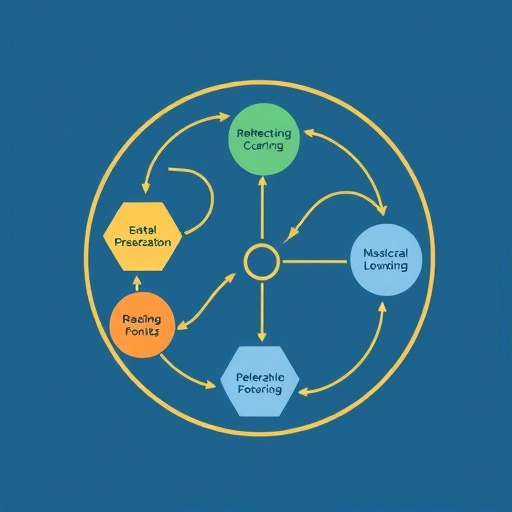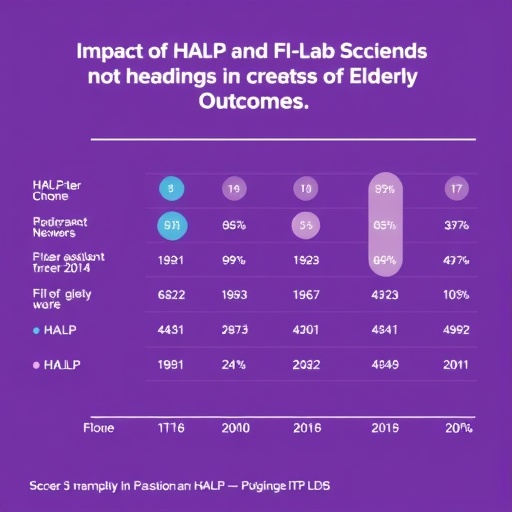PROTECT YOUR DNA WITH QUANTUM TECHNOLOGY
Orgo-Life the new way to the future Advertising by AdpathwayA groundbreaking study published in BMC Pediatrics has unveiled significant insights into child development in three countries: Bangladesh, Pakistan, and Tanzania. Led by researchers including Nizar A., Khanam R., and Ali J.K., the AMANHI-ACT study has thoroughly examined the intricate interplay between biological, socioeconomic, and environmental factors that influence early childhood development. As nations strive for sustainable growth, understanding these factors becomes essential, particularly in regions where instability can dramatically affect children’s standard of living and developmental opportunities.
In the context of global health, childhood development remains a pivotal concern for policymakers, researchers, and caregivers alike. Adequate attention to this segment of the population is vital as it lays the foundation for a prosperous future generation. Previous research has shed light on various aspects of child development; however, the current study takes a multifaceted approach, assessing not just biological factors but also the socioeconomic and environmental landscapes that shape developmental outcomes. This comprehensive analysis aims to offer a more holistic understanding of the challenges young children face in their formative years.
One of the most striking findings of the AMANHI-ACT study pertains to the profound role socioeconomic factors play alongside biological determinants. For instance, the research indicates that access to nutrition, maternal education, and household income directly correlate with children’s development at two years of age. These elements serve as foundational pillars; without them, efforts to enhance early childhood development are likely to fall short. Consequently, the study advocates for integrated public health policies that consider economic and educational initiatives to bolster child welfare.
Interestingly, the research also highlights environmental factors that exert an influence on child development. The investigation delves into issues such as air quality, water sanitation, and exposure to pollutants. The evidence indicates that children living in urban areas with high pollution levels are at a distinct developmental disadvantage compared to those in cleaner, rural environments. This underscores the urgency for governments and local authorities to enact stricter environmental regulations while also promoting interventions in child health, particularly in high-density populations.
Following this examination of environmental impacts, the research expands to show how community cohesion and stability affect child development trajectories. In communities with strong social support systems, children often exhibit better emotional resilience and cognitive abilities. Conversely, social disintegration and conflict can create environments that jeopardize the developmental potential of young children, revealing a crucial area of concern for policymakers seeking to improve community health strategies.
Further essential findings point to the implications of parental involvement and educational resources in early childhood development. The study informs us that when parents engage in educational activities and nurturing practices, children demonstrate marked improvements in various developmental benchmarks. Thus, empowering parents with tools, resources, and training is a critical strategy that can yield long-term benefits for child health metrics.
The study’s geographical breadth adds a layer of richness to its findings, allowing for comparative analysis among the three countries. Despite cultural and economic differences, certain themes emerged as universal, indicative of broader trends in child development. This cross-sectional approach allows researchers to identify distinct patterns and correlations while also recognizing unique regional challenges that may require tailored intervention strategies.
Moreover, the study meticulously employs robust methodologies to ensure the reliability and validity of its findings. By utilizing large sample sizes and employing standard measurement techniques for developmental milestones, the researchers have built a compelling case for the relationship between the identified factors and child development. Such a methodological rigor enhances the study’s credibility and paves the way for future research in related domains.
As the implications of the AMANHI-ACT study resonate throughout global health discussions, it calls for amplified efforts in advocacy for policies that support comprehensive early childhood development frameworks. These frameworks should address the socio-environmental determinants of health while simultaneously focusing on infrastructural advancements and educational initiatives.
In a world facing unprecedented challenges, including climate change and socioeconomic disparities, researchers and policymakers are charged with responding to the data this study provides. It presents a clarion call for urgent action to integrate multifactorial approaches to child health that align with global developmental goals.
Furthermore, as many sectors grapple with the realities of systemic inequities, this research highlights the necessity of adopting a collaborative approach that unites health professionals, educators, and community leaders to ensure that children across all demographics receive equal opportunities for growth and development.
The revelations within this study not only contribute to a deeper understanding of child development but also serve to ignite a dialogue about collective responsibility. Such discussions are paramount for galvanizing support from various stakeholders to create comprehensive solutions that genuinely meet the needs of children at risk of falling behind in their foundational years.
In conclusion, the AMANHI-ACT study stands as a poignant reminder of the interconnectedness of biological, socioeconomic, and environmental factors in shaping child development. With its detailed analysis and rich findings, the research underscores the necessity for a unified approach to fostering an environment where every child can thrive, irrespective of their geographical or social circumstances.
Through the lens of this influential research, we are urged to acknowledge the urgency in addressing these factors and commit to an integrated strategy that prioritizes child well-being. If we aim to achieve sustainable development goals, we must empower communities, enhance parental engagement, and advocate for improved policies—all of which are imperative to nurturing the potential of our youngest generations.
These critical insights affirm that understanding the association of biological, socioeconomic, and environmental factors with child development can lead to enhanced intervention strategies, ensuring that children everywhere have the opportunity to flourish.
Subject of Research: Factors Influencing Child Development
Article Title: Association of biological, socioeconomic, and environmental factors with child development at two years of age in Bangladesh, Pakistan, and Tanzania: results from the AMANHI-ACT study.
Article References:
Nizar, A., Khanam, R., Ali, J.K. et al. Association of biological, socioeconomic, and environmental factors with child development at two years of age in Bangladesh, Pakistan, and Tanzania: results from the AMANHI-ACT study.
BMC Pediatr 25, 785 (2025). https://doi.org/10.1186/s12887-025-06060-2
Image Credits: AI Generated
DOI: 10.1186/s12887-025-06060-2
Keywords: child development, socioeconomic factors, environmental factors, early childhood education, public health policy, Bangladesh, Pakistan, Tanzania.
Tags: AMANHI-ACT study findingsBangladesh child health studybiological determinants of child developmentchild development factorsenvironmental impacts on early childhoodglobal health and childhoodholistic approach to child developmentPakistan child development researchsocioeconomic influences on child growthsustainable development and childrenTanzania early childhood development


 2 hours ago
11
2 hours ago
11





















 English (US) ·
English (US) ·  French (CA) ·
French (CA) ·